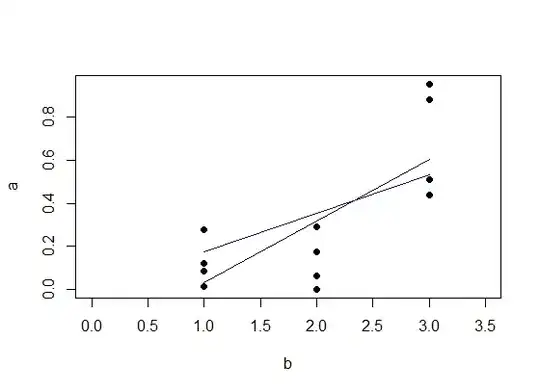set.seed(11)
a = runif (12)
b = rep(c(1,2,3),4)
summary(lm(a~b))$coeff
summary(lm(a~b-1))$coeff
What does a p.value for the intercept means ?
What differences makes the second formula ?
Why is the p.value lower and the R squared higher in the second formula ?
What does the first column ("Estimate") means ?
Thanks a lot for your help.
